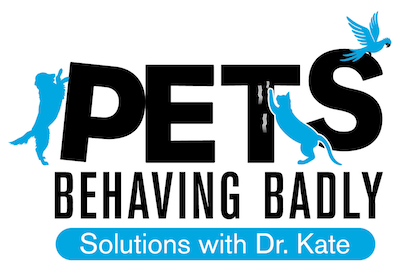Avoiding Lead Reactivity
There's a lot you can do to help avoid your puppy or adult dog from developing lead reactivity. Remember, most lead reactivity and aggression, whether towards people, other dogs, animals or inanimate objects, develops due to past unpleasant or scary experiences. Try to avoid such experiences by reading and responding appropriately to your dogs behaviour and body language. This is easier said than done, as research suggests people are not proficient at correctly interpreting dog behaviour and emotions. You can read more about how to accurately interpret canine body language here, here and here and see a quick video demonstration here and a more detailed one here. If you notice your dog is uncomfortable in a situation, move them away until they relax again. Remember when your dog is on lead, and feels unsafe or threatened for any reason, their escape option (flight response) is not available and they’re much more likely to use aggression (fight response) in an effort to make the scary thing go away. It’s up to us to ensure we can accurately read our dogs (and others) to avoid placing them in situations in which they resort to reactivity and aggression.In addition, work on making outings on the lead extra positive. Most dogs already love going for a walk because of the novel sights and smells and the opportunity to explore. However you can boost and help maintain the positive association with things your dog encounters during walks (e.g. cars, bikes, other dogs, strangers, kids etc) by pairing them with things your dog values (e.g. high value treats, pats, praise, favourite toys, games etc). By doing this extra work, you can help negate any mildly negative experiences your dog may have. Also work on rewarding your dog for calm and compliant behaviour while on lead. This is also helpful for dogs that become overly excited and frustrated when on lead. So many dog owners underestimate the importance of teaching their puppy how to walk nicely on the lead – a foundation behaviour which will provide the building blocks of a great relationship. Learn more about lead training your puppy and adult dog here and here. This might be stating the obvious but dogs don’t come automatically programmed to walk nicely on the lead and be model canine citizens. They need to be taught how and, as their guardians, it is our responsibility to dedicate the time and patients to teach them.
 |
| A happy and relaxed dog (Image: Alex Pearson on Flickr) |
Resolving Lead Reactivity
If your dog is already lead reactive or aggressive
you firstly need to identify the trigger or triggers for the behaviour (e.g.
other dogs, strangers, trucks etc) and the critical distance (or threshold) at
which your dog begins to show early signs of fear, stress or anxiety. These are
often subtle (e.g. lip licking, panting, ears held back, hard eyes, paw lift, focused
attention on the trigger etc) and preclude the more overt signs of reactivity
and aggression (e.g. barking, growling, pulling on the lead, pilo-erection). Next
you need to work on changing your dog’s emotional response to the trigger (e.g.
seeing another dog) from a negative association due to fear to a positive
association while under threshold. Sounds easy enough but what does this involve?
The most common approach is a combination of desensitisation (gradual exposure
to the stimulus under threshold - with enough distance between it and your dog
so as your dog remains relatively relaxed and engaged in the training) and Classic
Counter-Conditioning (pairing the presence of the stimulus with something
pleasurable such as favourite treats). For example, your dog sees another dog
and immediately receives a favourite treat. After several short sessions pairing the just the presence of another dog with high value treats you want to
switch to Operant Conditioning in which your dog learns to become more comfortable
with the approach of another dog and looks to you for reinforcement. This is when you can ask for and reinforce, a known behaviour such as 'sit' or 'look'. This positive reinforcement training helps
to activate the reward pathway in the brain releasing Dopamine, a
neurotransmitter responsible for producing a natural “high” (but more on behavioural
neuroscience in a future post!). With consistency and repetition, your dog
learns that the previously scary stimulus now predicts good things and no
longer poses danger. The result, over time, should be a marked reduction in
reactive and aggressive behaviour.
There are numerous protocols available, based on these principles, that have been developed by experts to assist you to work on resolving your dog's lead reactivity. Choose one that’s feasible and realistic for you. Here’s a
few I recommend:
- Grisha Stewart’s Behaviour Adjustment Training (BAT)
- Dr Sophia Yin’s Foundation Exercises for Lead Reactive Dogs
- Victoria Stilwell’s Teaching a Leash Reactive Dog to Make the Right Choices
 |
| Image: MarkScottAustinTX on Flickr |
Finally, if you feel you don't have the skills or knowledge to work to resolve your dog's lead reactivity or aggression, or you have tried several things that haven’t worked, then please seek professional help. Doing so is in everyone's best interest: Yours, your dog's and the community's.


Thank You Dr Kate for providing the link to this post via facebook. I would like to respond in greater detail when I have gone through it carefully. My dog is a rescue dog who is reactive towards other dogs on walks - by which I mean barking (which scares the owners). He is not nasty in any way, but wants to go to them. He does not respond to treats. There is a threshold distance which I try and maintain, but which is not always possible. If he meets another dog calmly face to face he is fine, but seems to react to sudden rapid movement in his direction. His natural disposition is gentle, and he absolutely loves his walk.
ReplyDelete